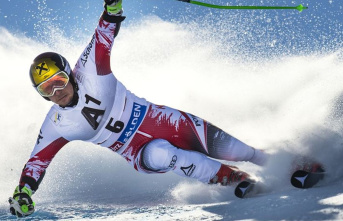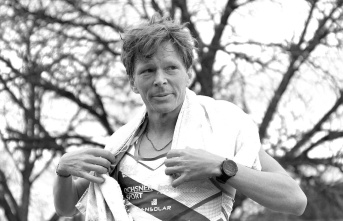climate change is caused sometimes problems, that probably no one thinks in advance – until you are there. Specifically, the Italian Rifugio Guide del Cervino. The mountain sports learning known hut sits on a mountain ridge near the Plateau Rosa in the Valais Alps. In the North of Switzerland, in the South of Italy.
skiers reach the year-round accommodation from Zermatt by cable car and ski lift. On the Italian side of the skiers take the cable car from Breuil-Cervinia to the Station of Testa Grigia at the theodul pass. For mountain climbers, the Rifugio is a good starting point for tours on the Breithorn and the Monte Rosa area.
The refuge was built in 1989 to 3480 meters above sea level, is, however, something in the years come, and in a poor state. The Italian municipality of Valtournenche, to build a new accommodation. But now you don't has made climate change a dash through the bill: The Rifugio, is Italian, but it is on Swiss soil. The land border has shifted – or more precisely, the limit is different, because the warming of the last few years has placed the under the ice and Firn hidden rock edge free.
That would actually be a simple matter for the affected communities – Zermatt on the Swiss side, Valtournenche on the Italian. Both authorities are thinking in a pragmatic way. The refuge will remain Italian. However, a shift in the border of the country has a national political significance.
let's Start at the beginning of the story, to understand the simple facts of the case, which is now become complicated: The boundary Commission, consisting of Swiss and Italian delegates, decided 15 years ago, the borders of the country photogrammetric restitution is to be assessed using current aerial photographs – new. Switzerland and Italy established the boundary line in the years between 1924 and 1938. The state border runs according to a set of regulations from the year of 1941, either along watersheds or mountain slopes to be taken into account – in which there is always the gradual natural changes. The latter is explicitly understood as a result of erosive processes.
The States rules, usually under, sometimes by area compensation, specifically through the delimitation of a new area by the laying of boundary stones. Because it is the unwritten law: A defined land area is to remain constant.
40 miles and this has changed the country border to Italy.
Now studies at the theodul glacier showed that the line of the watershed due to the glacier melts around 100 to 150 metres in Switzerland's favour has moved. However, since the consequences of climate change were not anchored in the border regulations to date, fixed by the two States in a so-called exchange of notes between the countries, in force since 2010. Meanwhile, according to the Federal office of topography (Swisstopo) by the Melting of glaciers or Firn shifts the boundary line to approximately 40 kilometres to the Swiss-Italian border.
"Generally speaking, it will be solved in a non-bureaucratic, because no one is really affected," says Alain Wicht, senior officer for the borders of the country at Swisstopo. Not so at the Rifugio del Cervino. Guy can remember the-metre-high snow walls in front of the refuge on the Swiss side. "As children, we ran with the Ski, respectively, to the cabin down." The snow wall was the vagina, the line of the water, where the water flowed in both valleys. That is to say: The hut on the Italian side. Now the snow is gone, and the larger part of the refuge edge is a little beyond the broad mountain on the Swiss side.
to think Of a new building, as the plans of the Italian community, but this is currently. Only the boundary has to be adjusted exactly. It is about 500 square meters. Switzerland had presented a few years ago, a solution with area compensation. The proposal was based on the basis of a new determination of the watershed line, which has been approved by the technical committees of both countries for the land surveying jurisdiction.
"Unfortunately, up to now, no consensus is found," says guy. New negotiations are planned in the coming may. A new proposal however, there are not. "Both countries have again and came to the same conclusion." As always: The hut should remain Italian. Basically, is solved in the terrain of the Problem already. A snow-path from the drag lift to the hut is designed in a way that the cabin is again on Italian soil. "The path describes the vagina to part the water, but unfortunately, it is created artificially, and this is not true," says guy.
And what is the agreement? From the Swiss side, it was decided quickly, but in Italy the implementation of the new boundaries could take up to ten years – depending on how important the political authorities would take the border, says the surveyor.
Check the country's border with The Swiss national maps to be renewed every six years. Every three years, Switzerland will be overflown. On the aerial photographs, the site will be searched for natural or artificial changes. "In the past, borders were described, and a mountaineer knew where the border was, as soon as he saw the watershed," says Alain villain from the Swiss Federal office of topography (Swisstopo). The main border points are today measured by satellite. With the digitization of Swisstopo also has more work than in the past. Now, changes in the meter range, but in milliseconds to be registered meters.
Alain villain is busy throughout the year with new boundaries. Not only the Melting of the glaciers leads to new spatial situations. In the Canton of Geneva, according to the guy currently has three adjustments. One of them relates to the river Hermance. The 13-kilometre-long tributary of the lake of Geneva is defined in the lower reaches of the country border to France. The middle of the stream, the boundary line is in each case. Through an ecological enhancement of the stream has changed course in favor of Switzerland. "With the displacement of a single landmark, we were able to enter France with the appropriate floor space back," says guy.
The land surveyor is expected in the future due to the glacier melt even more border changes. The good news: For skiers and climbers, nothing changes on the Rifugio Guide del Cervino, as long as the hut keeps.
The Swiss national maps to be renewed every six years. Every three years, Switzerland will be overflown. On the aerial photographs, the site will be investigated, and after natural or artificial changes searched. “In the past, borders were described, and a mountaineer knew where the border was, as soon as he saw the watershed,” says Alain guy. The main border points are today measured by satellite. With the digitalisation of the Swiss Federal office of topography land surface topography has also get more work. Now changes are not in meters, but in millimeters, registered.
Created: 13.03.2020, 06:55 PM
Date Of Update: 13 March 2020, 08:05










